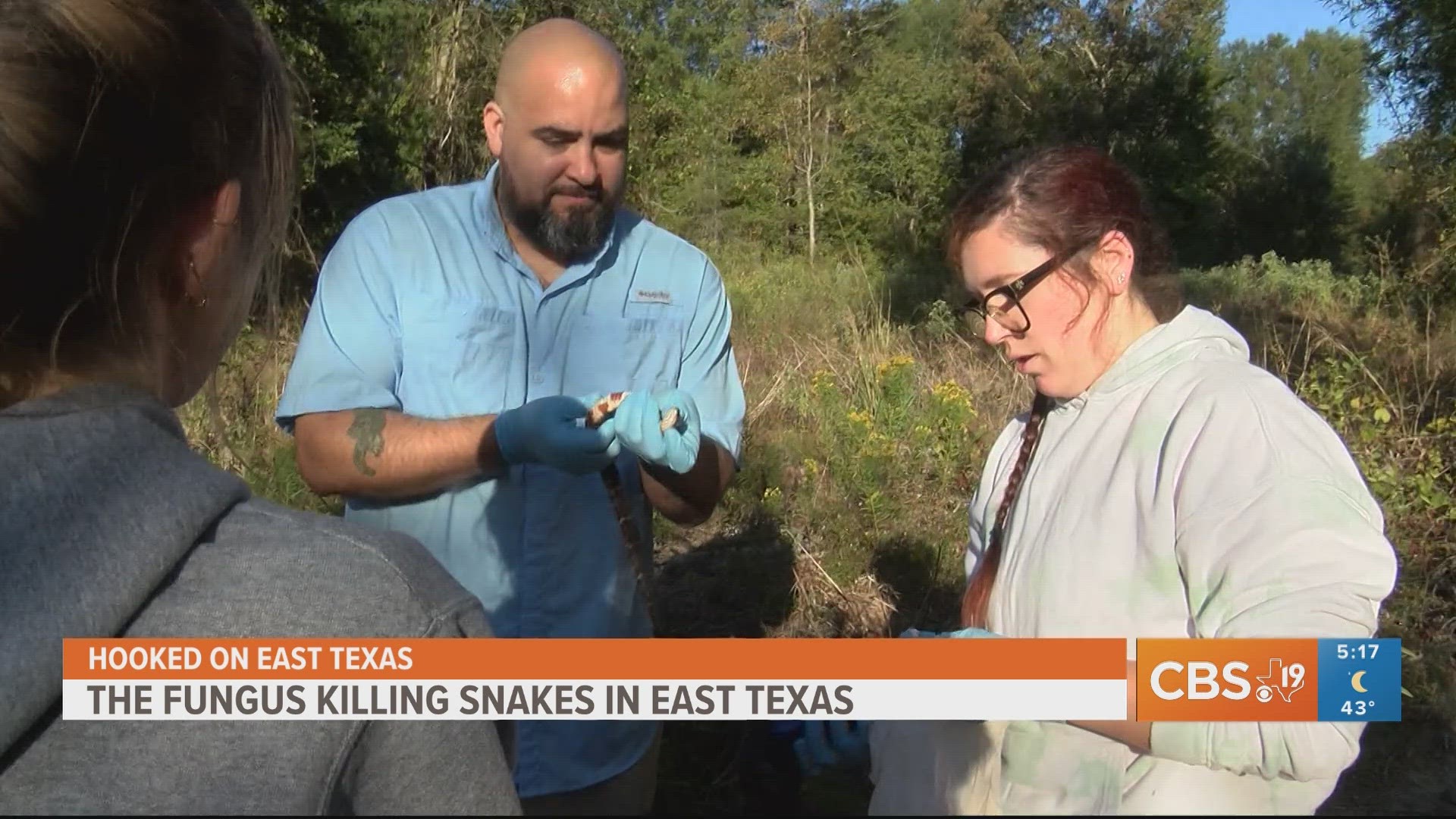TYLER, Texas — What’s killing snakes in East Texas? Biologists with The University of Texas at Tyler want to know. On this week’s edition of Hooked on East Texas, we head into the field to find out.
We ventured out to the Neches National Wildlife Nature Preserve looking for snakes. But this isn’t just a snake hunt.
UT Tyler graduate student Kennlyn Volz is searching for more.
"I study snake fungal disease”, Volz said.
Volz and the team are researching a fungal disease that is killing snakes in East Texas.
The team turned over coverboards scattered throughout the nature preserve in hopes of catching snakes for analysis.
UT Tyler biology professor Alan Lizarraga described how the fungus affects snakes,
“So right now it's only affecting snakes, this type of fungus, this genetic makeup, these type of exosomes that break down the keratin strictly belong to this fungus," said Lizarraga.
Biology student Lezley Hart knows what's at stake.
“It’s very important for us to find out, because, you know, they're an integral part of the ecosystem," Hart said. "So, we don't want any ecosystem imbalance to come from the fungus and losing population."
Every snake caught is examined for discolored scales which could be evidence a snake has the deadly virus.
The snake we found appears healthy, but pictures were taken, scales were swabbed, and the snake was released safely. The data that was collected here, was taken back to a lab for deeper examination.
“So the fungus attaches to the scales, it's keratin phenolic," Lizzaraga said. "So, it is like keratin in the scales. And what it does is it grows downwards into the snake. So, think of athlete's foot, right, you get the fungus on your foot, and it starts to grow on your foot."
The virus presents as sores, often near the eyes and mouths of the snakes, then the snake becomes lethargic. They stop eating and are easy targets for prey. You might think of snakes as pests, but Lizarraga sees it differently.
“Snakes are important to the overall ecology of an environment, right, so you don't see many mice in your homes right now," Lizarraga said. "But if we were to lose a snake population in our area, the amounts of rat and mice that you see will increase tenfold.”
The virus isn’t new. It was first discovered in 2006 when Timber Rattlesnake populations declined. But the virus is spreading and now here in East Texas. It may have evolved from lizards and could be spread through dirt or contact with other sick snakes. And now concerns over climate change could mean the virus jumps to rodents.
“That could be exacerbated by climate change, right?," said Lizzaraga. "So, as it gets warmer and wetter, its ability to live in warmer temperatures may cause it to be able to live on warmer surfaces, such as that on mammals."
That could lead to bigger problems. But turning over the coverboards might shed some light on how to stop the virus from spreading.
“So first thing we need to do is figure out how it's spreading and what's the most dangerous way that it's spreading if it's spreading through the soil, or we need to figure out some sort of mitigation strategy to involve treatment to the soil," Lizzaraga said.
Finding answers and possible links to climate change is the goal for Volz and this research team. It's a project for a emergent infectious disease so it will have meaningful results for conservation.
Researchers hope to collect samples from more than 100 snakes this year. There’s a sense of urgency given the high stakes of spread and what declining snakes could mean for the East Texas ecosystem.

